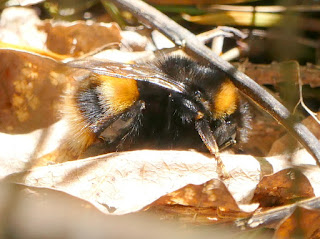This 19th century Sussex church is interesting in itself: more info' at
http://www.sussexparishchurches.org/spc_V31/west-sussex/28-west-sussex-s-t/553-staplefield-st-mark
American readers may be interested to know that
George Washington's grandmother lived in this village before this church was built.
The churchyard has both English and Irish yew trees -- two Irish yews either side of the path above.
What is so lovely about this churchyard is the sensitive way in which it is managed. Some paths are mowed between the gravestones leaving the greater proportion of grass uncut and allowing these beautiful native orchids to flourish.
A rare shaft of sunlight illuminated this patch of orchids above. Overcast skies are better though for photographing such delicate flowers.
With this village's links to the American Revolutionary war, here is a poem by the American author, Mary Elizabeth Frye
Do not stand at my grave and weep
I am not there. I do not sleep.
I am a thousand winds that blow.
I am the diamond glints on snow.
I am the sunlight on ripened grain.
I am the gentle autumn rain.
When you awaken in the morning's hush
I am the swift uplifting rush
Of quiet birds in circled flight.
I am the soft stars that shine at night.
Do not stand at my grave and cry;
I am not there. I did not die.




























































